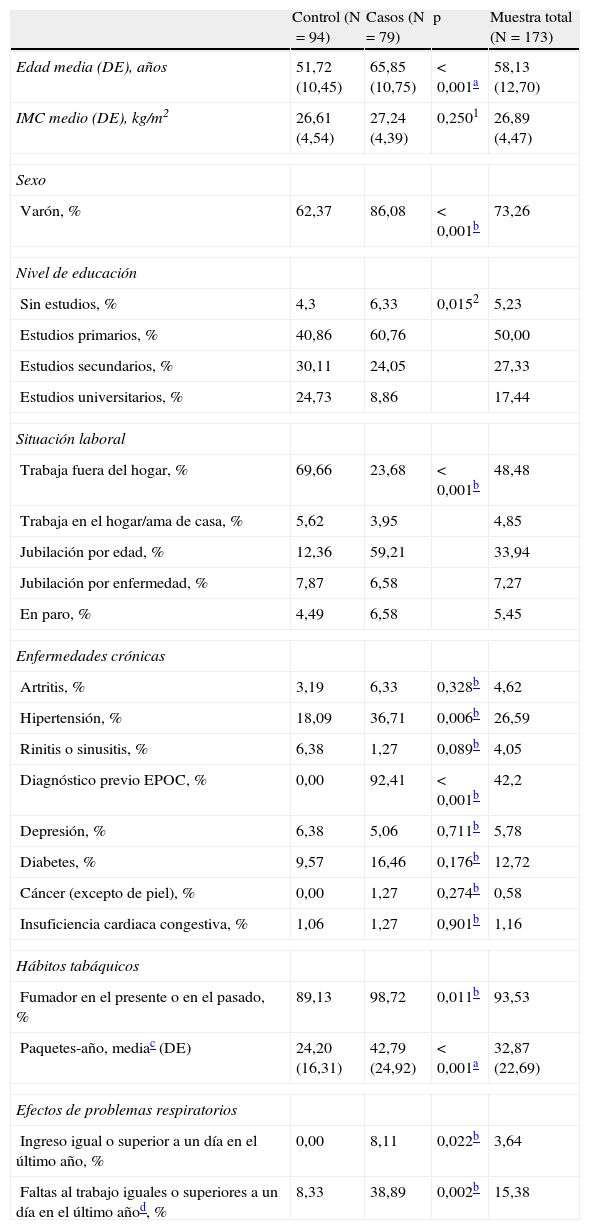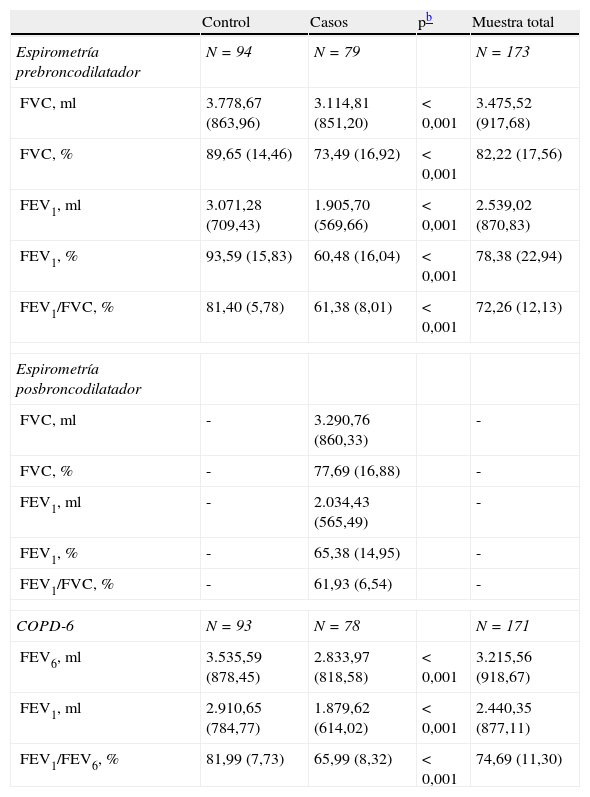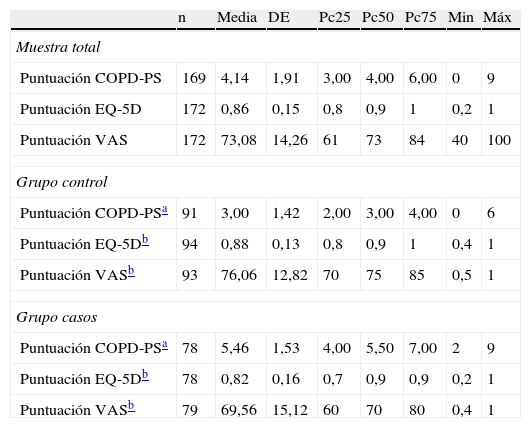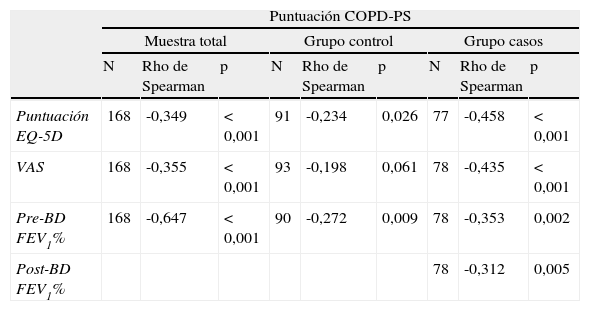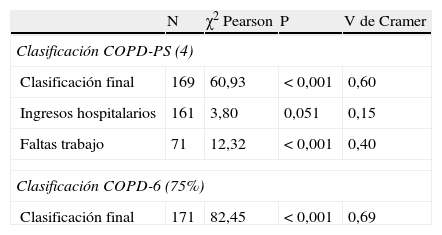La enfermedad pulmonar obstructiva crónica (EPOC) es una patología de elevado infradiagnóstico. La utilización de cuestionarios breves diseñados para detectar casos de posible obstrucción crónica al flujo aéreo puede ayudar en el diagnóstico temprano de la EPOC.
Paciente y métodoEstudio epidemiológico observacional y transversal de validación de la versión traducida y adaptada del cuestionario Chronic Obstructive Pulmonary Disease-Population Screener (COPD-PS). Se recogieron datos sociodemográficos y clínicos, así como las respuestas a los cuestionarios COPD-PS y EQ-5D y el parámetro volumen espiratorio forzado en el primer segundo/volumen espiratorio forzado en 6 segundos (FEV1/FEV6) medido mediante el dispositivo COPD-6. Se estudiaron las propiedades psicométricas del cuestionario y la capacidad diagnóstica del cociente FEV1/FEV6 tomando como referencia el cociente FEV1/capacidad vital forzada (FEV1/FVC) posbroncodilatador < 0,7.
ResultadosParticiparon 10 centros de atención primaria que incluyeron 94 controles y 79 casos con obstrucción crónica al flujo aéreo. Las características del cuestionario fueron: factibilidad, 2,3% de los participantes no contestó algún ítem; el tiempo medio de cumplimentación fue de 47,7 segundos; el 4,1% de la muestra obtuvo puntuación cero. Validez, correlación moderada con puntuaciones del cuestionario EQ-5D y moderada-alta con el FEV1; la puntuación en el cuestionario se asoció con todos los parámetros indicativos de EPOC estudiados. El punto de corte 4 presentó el mejor balance sensibilidad/especificidad y un 78% de individuos correctamente clasificados. Para el cociente FEV1/FEV6 un punto de corte de 0,75 clasifica correctamente al 85% de los individuos.
ConclusionesEl cuestionario COPD-PS demostró buenas propiedades psicométricas. Un punto de corte 4 presenta propiedades predictivas óptimas. El cociente FEV1/FEV6<0,75 ofrece una excelente correlación con el cociente FEV1/FVC y es útil para el cribado de obstrucción crónica al flujo aéreo.
The chronic obstructive pulmonary disease (COPD) is a highly undiagnosed disease. The use of short screening questionnaires designed to detect chronic airflow obstruction may help to the early diagnosis of COPD.
Patients and methodThis was an observational, cross-sectional epidemiological study aimed to validate the translated into Spanish version of the COPD-PS questionnaire. Socio-demographic and clinical data of participants were collected, as well as their answers to the COPD-PS and EQ-5D questionnaires. The ratio FEV1/FEV6 was measured with the COPD-6 device. The psychometric properties of the questionnaire and the diagnostic yield of the FEV1/FEV6 ratio were analysed, both referred to the gold standard of post-bronchodilator FEV1/FVC < 0.7.
ResultsTen primary care centers participated in the study and included 94 controls and 79 cases with chronic airflow obstruction. Questionnaire characteristics were: feasibility, 2.3% of participants did not answer at least one item; mean time to fill the questionnaire was 47.7seconds; 4.7% of individuals had a 0 score. Validity, moderate correlation with EQ-5D scores and moderate-high with FEV1; the scores of COPD-PS were related to all parameters associated with COPD. A cut off of 4 units had the best sensitivity/specificity ratio and correctly classified 78% of participants. For the FEV1/FEV6 ratio, a cut off of 0.75 correctly classified 85% of individuals.
ConclusionsThe COPD-PS questionnaire demonstrated good psychometric properties. A cut off score of 4 has excellent predictive value. A ratio of 0.75 in the FEV1/FEV6 provides an excellent correlation with the ratio FEV1/FVC and is useful for the identification of individuals with chronic airflow obstruction.
Artículo
Comprando el artículo el PDF del mismo podrá ser descargado
Precio 19,34 €
Comprar ahora








